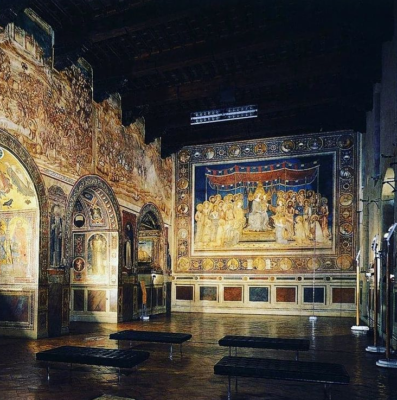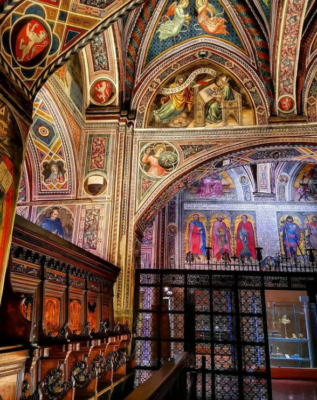Palazzo Pubblico and Torre del Mangia
The nucleus of the Piazza del Campo is the Gothic mega-structure of the Palazzo Pubblico and its iconic Torre del Mangia. The “Public Palace” was built between 1288 and 1342 by the famous government of the Nine which transformed the face of the whole city up to this day.
When the order for the construction of the building was issued by the city government it was accompanied by a second one which dictated only buildings with the same style as the palace could be built around the Piazza and none of them could exceed its overall size.
On the elegant facade of the palace, all the typical elements of the Sienese Gothic style unfold most harmoniously: the pointed Sienese arch, the triforce window, the use of travertine limestone in the lower area, and clay above.


The first row of arches, some portals, and other large windows form the loggia of the ground floor built in stone. The next two floors built in terracotta brick are lined with rows of triforce windows, supported by small columns and crowned by a small black and white sock, the symbol of the city.
The two extremes of the middle section are topped by belfries which are now empty while in the middle a large copper disc with the monogram of Christ, a symbol of St Bernardino of Siena commemorates his preaching in this same square more than 500 years ago.
On the right side of the building (left as we face it), sharp and elegant, the 102 meters tall Torre del Mangia, built between 1325 and 1348 after the designs of Lippo Memmi (brother-in-law of the famous Sienese painter Simone Martini Maestà-Palazzo Pubblico) by the brothers Minuccio and Francesco di Rinaldo from Perugia, stands the tallest symbol of the city.
Its name comes from its first guardian, responsible for ringing the hours, named Giovanni di Duccio, who liked to squander the money he earned in the city’s taverns, a habit that gave him the nickname Mangiaguadagni (the one who eats his earnings). Mangia is the abbreviated form of his nickname.
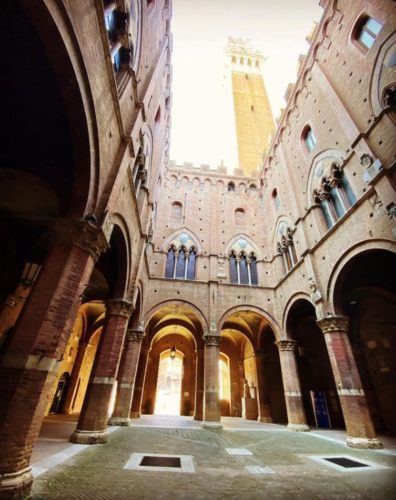
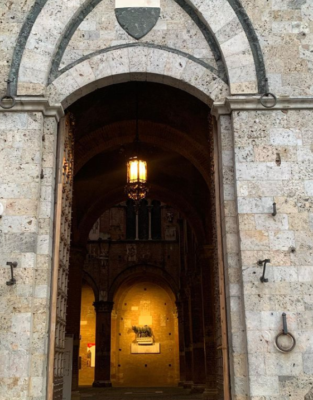

Under the Mangia Tower, erected by the Sienese as dissolution of a vow made during the plague of 1348, still radiant and white stands the marble “Cappella di Piazza” the Chapel Square, built in Gothic style and adorned with statues of saints that are tucked inside the hollow niches of the pillars.
The entrance to the government building is from the right portal decorated with a frieze near a column bearing a copy of a golden Lupa (she-wolf, symbol of Siena).
From the main entrance on the left side, you enter the courtyard called the Cortile del Podestà. From there, you find access to the city museum and the tower, Torre del Mangia, from where you can admire a splendid view over the roofs of the city after climbing over 400 steps. At the end of the courtyard, you will find the ticket office for the museum, beside the entrance to the city theater.
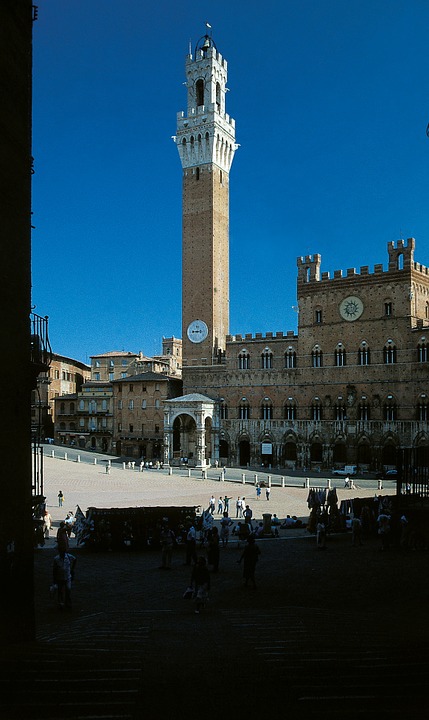
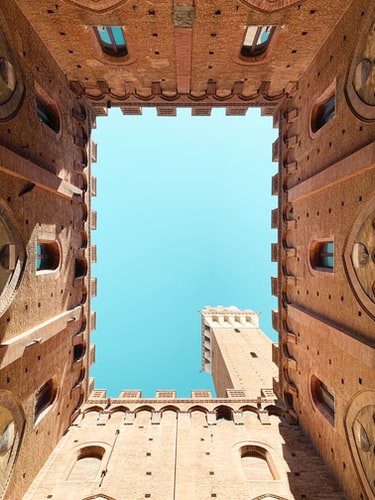
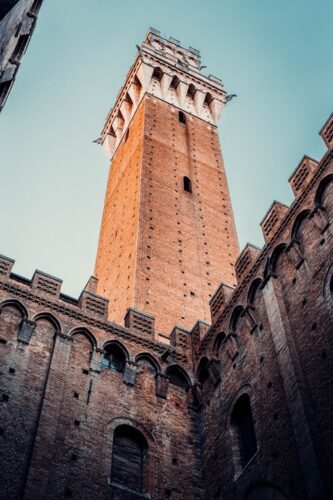
On the first floor of the Palazzo Publico is the large living room where the council of the Republic of Siena is known as the Hall of the Globe (Sala del Mappamondo). The name derives from the presence of a rotating disc, the globe, depicting possessions of the state of Siena at the time Ambrogio Lorenzetti created it in 1344. The works by Simone Martini among them the famous Maestà dominate the room’s walls.
Next to the Sala del Mappamondo, we find the historic seat of the Government of the Nine, the Sala della Pace (Hall of Peace) where the frescoes of Ambrogio Lorenzetti created between 1348 and 1340 represent most graphically the aftermath of the good and bad government.
The Sala del Risorgimento, the Hall of War (Sala di Balia), the Hall of Peace (Sala della Pace) the Cardinals’ Hall, the Consistory Hall, the Hall of Pillars, the Antechapel, the Palace Chapel, are in essence all part of the Museo Civico packed with masterpieces of Sienese art.
At the end of the tour, you can get a glimpse of Market Square and the southern half of the city from the terrace on the second floor known as the Loggia.

